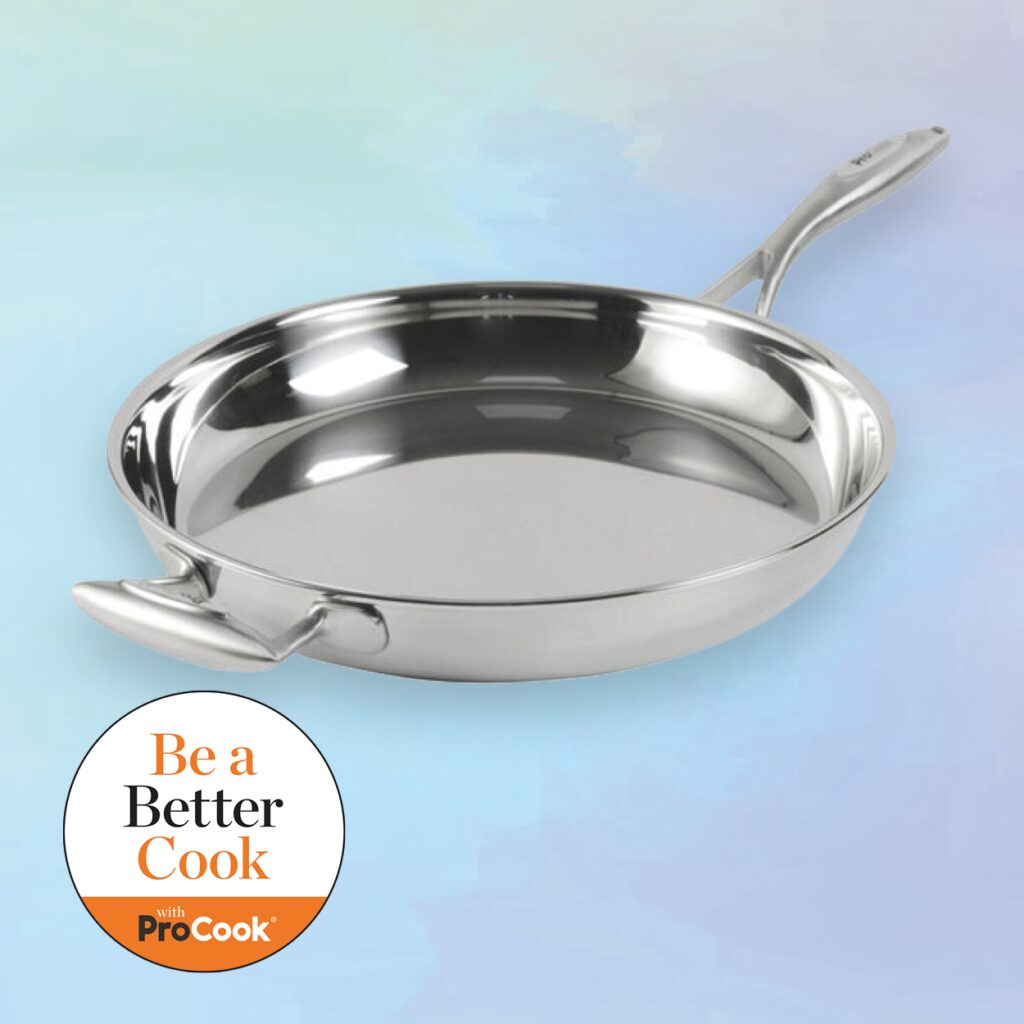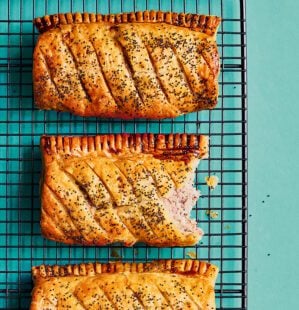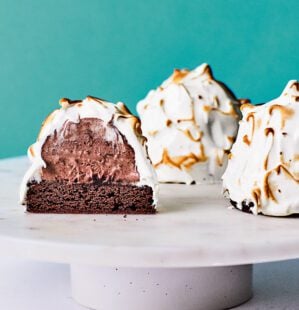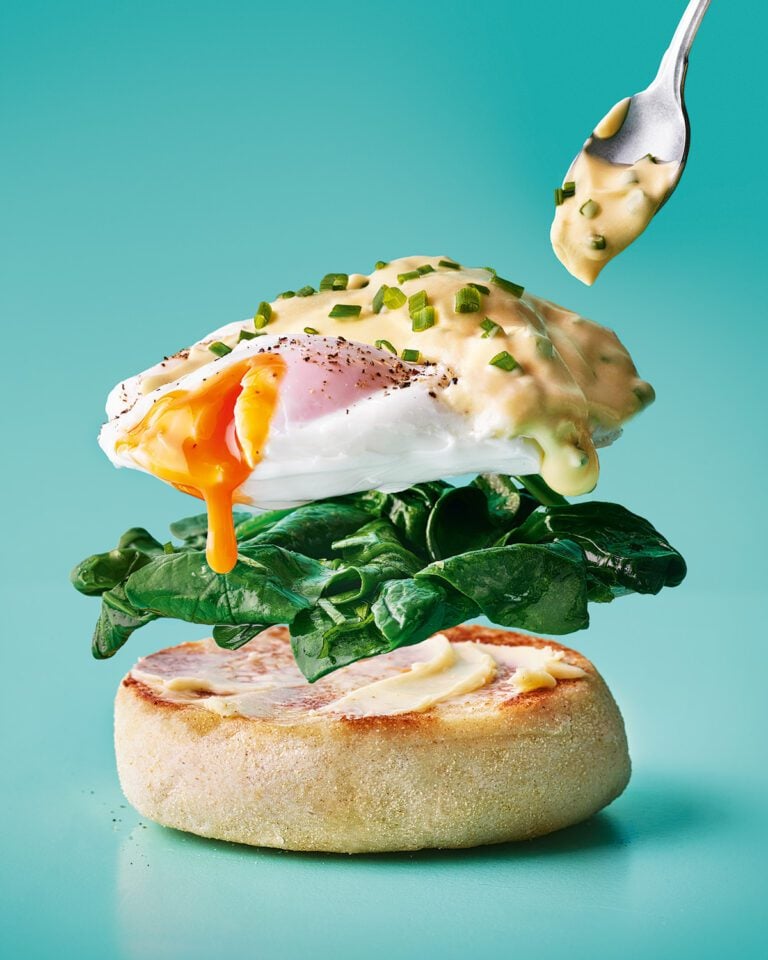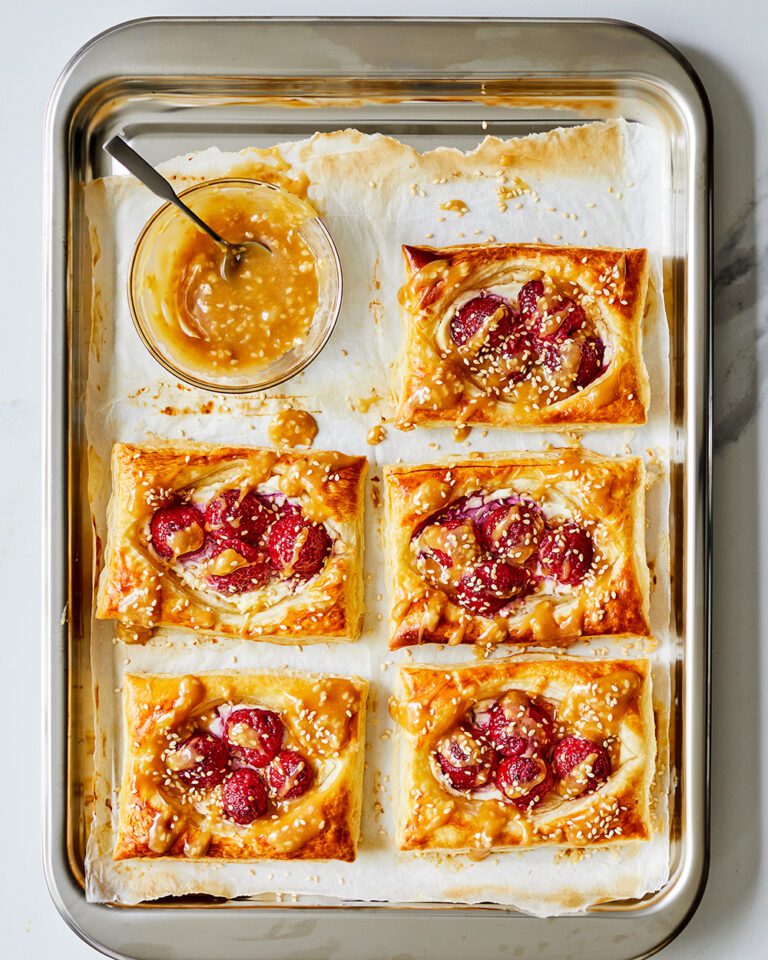ProCook

What’s fond – and why is it the secret to making incredible sauces?
It’s the key to creating amazing sauces and the reason why a stainless steel frying pan is a kitchen must-have – but what exactly is fond and how do you create it? Using a pan from our partners, ProCook, Head of Food Tom Shingler scrapes and stirs his way to the answer.
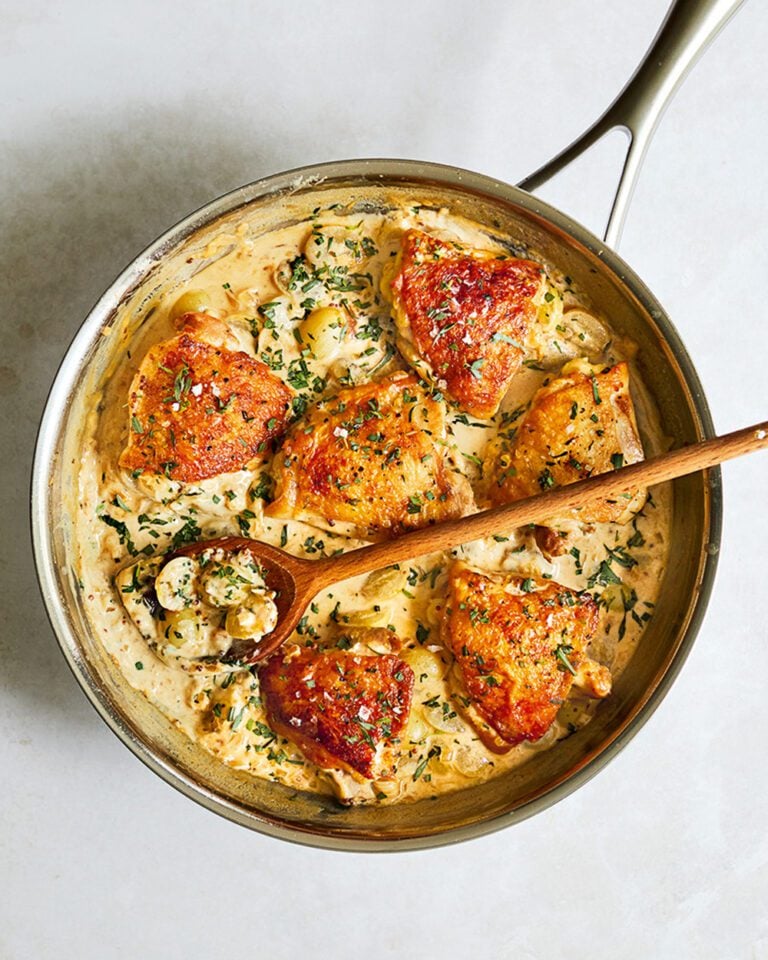
Non-stick cookware is great, don’t get me wrong – but it’s not the best choice for everything. Frying delicate fish or an egg? Reach for the non-stick. If you’re after some real caramelisation, though, that non-stick coating isn’t going to give you what you’re looking for. Stainless steel, on the other hand, will get that chicken skin crisp, brown those onions perfectly and, if you use it right, will even have those dreaded fish fillets and fried eggs sliding around on it without sticking. There’s a reason it’s the pan material of choice for professional chefs.
Sometimes, however, a bit of sticking is a good thing. Those little brown bits that adhere to the base of the pan after you’ve fried something are packed with flavour and are the key to restaurant-level sauce. They even have their own name in classical French cooking: fond, which means ‘base’.
For my money, fond is the best reason for cooking with a stainless steel pan. But get to know how to use it and you can use stainless steel to cook anything – even the stickiest, most delicate ingredients.
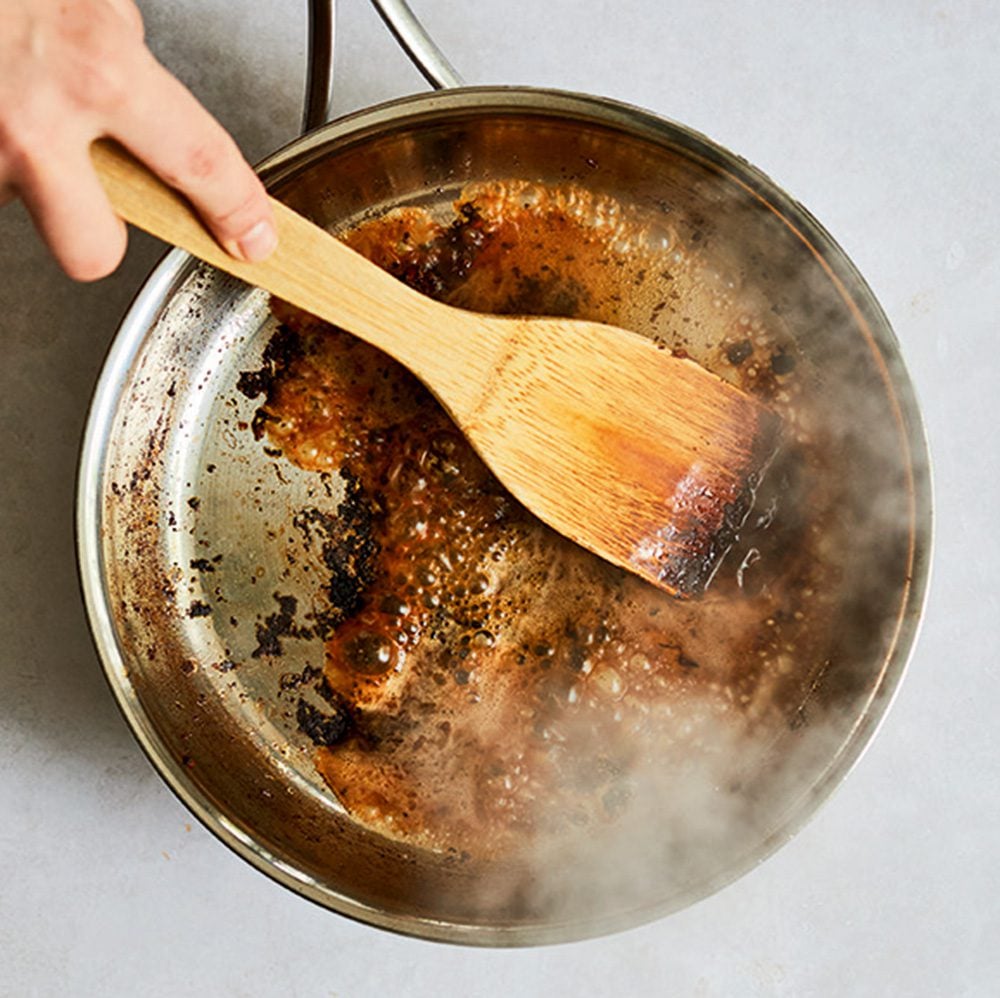
First… Get the pan properly hot
If you’ve ever used a stainless steel pan and found your food instantly fuses to it, it’s usually down to temperature. Before any food touches it and before you add oil or fat, stainless steel needs to be properly heated – 3 minutes over a medium-high heat is a good rule of thumb.
How to check the pan is hot enough
Use the glide method. When you think the pan’s hot enough, add a splash of water. If it sizzles, steams and evaporates, it’s too cold and the food will sitck. If it splits into hundreds of little dancing droplets, it’s too hot and you risk scorching the food. If it forms a single bead that glides around the pan, you’re ready to roll.
Using fond to make a quick pan sauce
Sauces can transform dishes, but many can take hours or days to create. Pan sauces are ready in a flash and, provided you have plenty of fond to play with, they boast just as much flavour.
What creates fond? If you’re frying something in a stainless steel pan, you’ll get fond. Skin-on chicken or other cuts of meat with a decent amount of fat will provide the most, but even frying finely chopped onions will leave that lovely golden-brown residue.
Deglazing to release the fond The fond is packed with flavour – it just needs a little liquid and friction to release it. That’s where deglazing comes into play. A splash of wine, beer, stock or even water, plus a good scraping with a wooden spoon, will lift the fond from the base of your pan and dissolve it in the liquid.
Transforming it into a sauce You now have a wonderfully concentrated, flavour-packed liquid. You can dilute it further with stock and/or enrich it with cream and/or other flavours to create a speedy sauce. The recipe below shows how good a fond-based pan sauce can be: quick, simple and delicious.
The pan for the job
We’ve been using ProCook’s Elite Tri-Ply pans in our test kitchens for about a year now, and they’re still just as impressive as the day they arrived. Tri-ply technology sandwiches a core of heat-conducting aluminium between two layers of stainless steel, providing a durable cooking material that’s quick to heat up. The ProCook Elite Tri-Ply uncoated 30cm frying pan (£79) is our favourite, also available in a set.
Tips for using your stainless steel pan
- Add your oil or fat after the pan is up to temperature – not before – and swirl it around so it coats the base of the pan. This boosts its non-stick properties even further, but it’s also important for heat conductivity.
- Let the pan do its job when it comes to searing. If you’re cooking larger pieces of meat or fish, leave them to sear undisturbed for at least a minute or two before flipping or moving them around the pan. You want to build up that caramelised crust as much as possible, which will take longer the more you prod it with your spatula. If your food has stuck to the pan, it will naturally release when it’s ready to be flipped, so don’t force it before it’s ready.
The recipe to try
Chicken thighs in a mustard, tarragon and grape pan sauce
This is a dish that’s simple to cook but still gives off cheffy bistro vibes when brought to the table. The sauce is the star, made using all that delicious fond from the bottom of the pan for buckets of flavour. All it needs is steamed green veg, with roast potatoes or rice on the side.
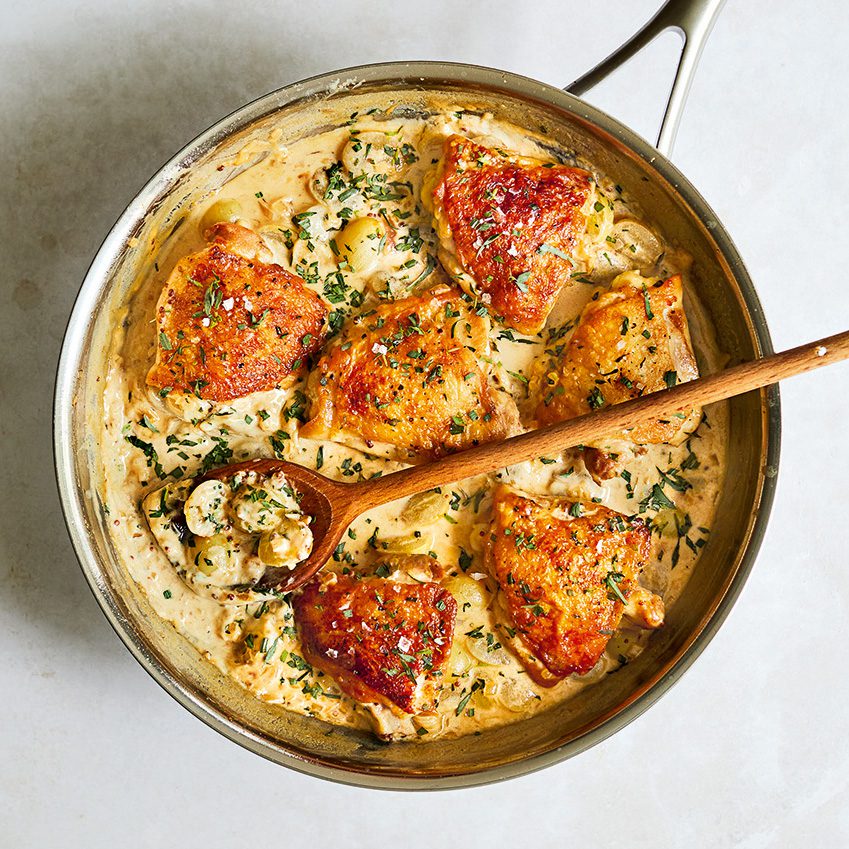
Discover more expert guides and skills masterclasses in our Be a Better Cook section.
Subscribe to our magazine
Food stories, skills and tested recipes, straight to your door... Enjoy 5 issues for just £5 with our special introductory offer.
Subscribe
Unleash your inner chef
Looking for inspiration? Receive the latest recipes with our newsletter
